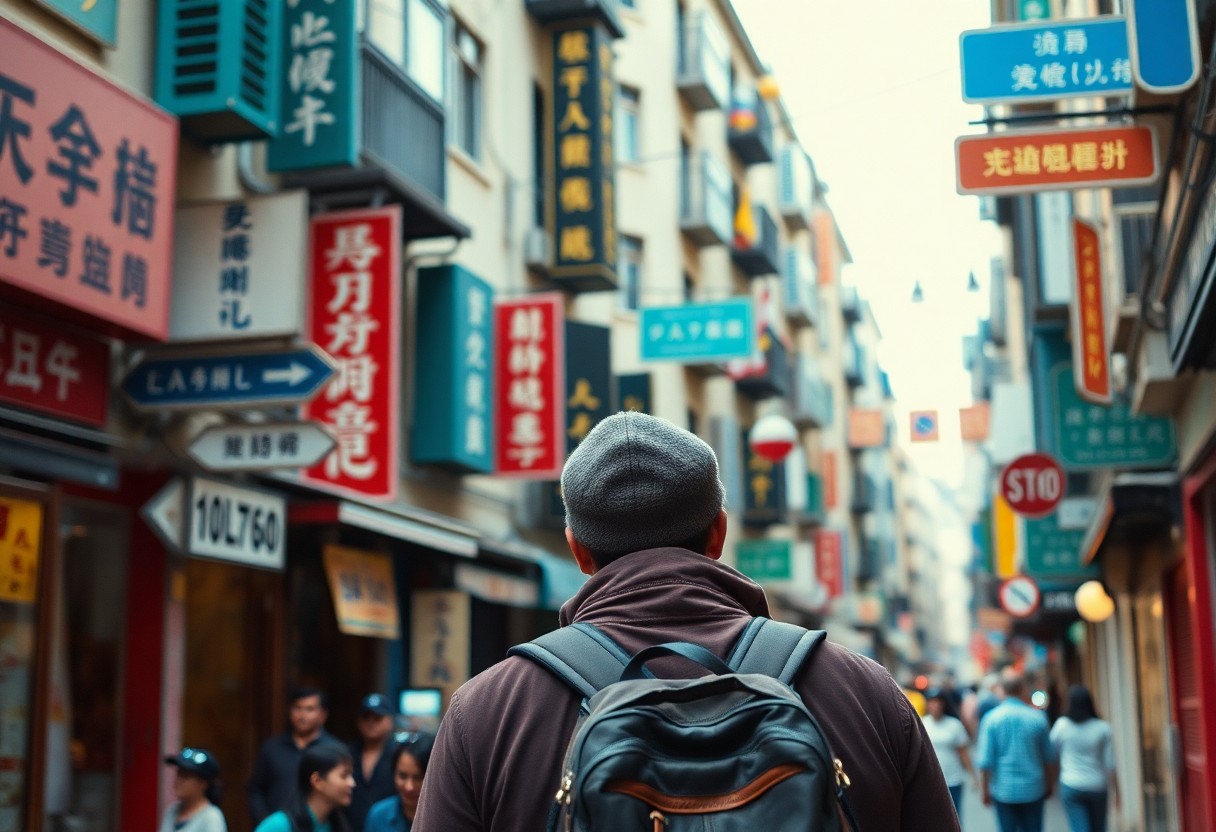It’s easy to feel overwhelmed when you find yourself lost in the winding streets of a foreign city. With unfamiliar landmarks and a different cultural ambiance, navigating can seem daunting. However, equipping yourself with effective strategies, such as utilizing modern technology and developing an intuitive sense of direction, can transform your experience. In this blog post, you will discover crucial tips that will empower you to explore and enjoy even the most intricate urban landscapes with confidence and ease.
Understanding the Layout of Foreign Cities
To navigate the intricate streets of a foreign city, it’s necessary to familiarize yourself with its layout. Each city has a unique design that reflects its history, culture, and geography. Observing the main arteries, alleyways, and public spaces can provide you with a mental map, making it easier to explore and appreciate the environment around you.
Historical Context of Urban Design
For every city, urban design has evolved in response to various historical events and cultural shifts. Understanding this context allows you to appreciate architectural choices and how they influence your navigation. Cities may showcase old town squares, medieval layouts, or modern designs, each telling a story about their past.
Types of Street Layouts
The type of street layout in a city can greatly affect your navigation experience. Different layouts create varied environments, making some areas easier to explore than others. Familiarizing yourself with common types of layouts can enhance your ability to find your way around.
| Street Layout Type | Description |
|---|---|
| Grid Layout | Streets intersect at right angles, forming a grid. |
| Radial Layout | Streets radiate out from a central point, like spokes on a wheel. |
| Organic Layout | Streets follow natural contours and historical pathways. |
| Linear Layout | Streets run parallel to a major feature, such as a river. |
| Cul-de-sac Layout | Residential streets that end in a loop or a dead end. |
Due to the diversity of street layouts, each offers distinct challenges and advantages for navigation. A grid layout simplifies navigation with clear intersections, while an organic layout may require exploration to fully understand. Familiarizing yourself with the layout type can ease your travel experience.
| Advantages | Challenges |
|---|---|
| Easy to follow | Potential for gridlock |
| Space-efficient | Can be monotonous |
| Visually appealing | Confusing at times |
| Intuitive design | May lack landmarks |
| Accessibility | Requires local knowledge |
Essential Tools for Navigation
It’s vital to equip yourself with the right tools for navigating the maze-like streets of foreign cities. Having the right resources at your disposal can not only ease your journey but also enhance your overall travel experience. Essential tools include modern technology, like GPS applications, and traditional navigation aids, ensuring you can find your way no matter the environment.
Maps and GPS Applications
The integration of maps and GPS applications has revolutionized how you navigate unfamiliar areas. With your smartphone, you can easily access interactive maps and real-time directions, making it simple to explore new places without getting lost. Features like point-of-interest recommendations and offline access are invaluable when roaming abroad.
Traditional Navigation Aids
With so many digital tools available, you might overlook traditional navigation aids. However, having a physical map or well-informed travel guide can be immensely helpful when technology fails or when you find yourself in areas with poor reception. These age-old tools not only provide directional guidance but also offer cultural insights that can enrich your travel experience.
To effectively utilize traditional navigation aids, it’s wise to familiarize yourself with your map-reading skills before your journey begins. Understanding cardinal directions, recognizing landmarks, and noting potential routes can help you navigate confidently. Additionally, take time to engage with locals who might provide valuable information that maps don’t cover, enhancing both your navigation and cultural experience.
Cultural Considerations in Navigation
Assuming you take into account cultural factors while navigating foreign cities, you will enhance your wayfinding experience. Understanding the local approach to navigation can significantly improve your comfort and confidence as you explore. For more insight, check out Wayfinding across ocean and tundra: what traditional …, which discusses various navigation methods across different cultures.
Language Barriers
Above all, language barriers can complicate your navigation efforts. Without a basic understanding of the local language, you may struggle to ask for directions or interpret signs, leading to confusion and frustration. Consider learning some key phrases or using translation apps to bridge this gap and facilitate smoother interactions with locals.
Local Customs and Signage
Navigation through a foreign city can also be affected by local customs and signage practices. Understanding how locals use maps, landmarks, or public transport can provide valuable context as you plan your journey. In many cultures, signs might be in the native language only, making familiarizing yourself with typical symbols beneficial. You might also notice unique traffic rules or pedestrian norms that differ from your own, which can impact your sense of direction.
Considerations such as symbolic representations on maps or the prominence of certain landmarks in local guiding traditions can enhance your navigation experience. Engage with your surroundings by noting where locals tend to gather or the often-used routes they take. These small observances will aid you in orientating yourself, allowing for a more immersive experience in the city.
Strategies for Effective Navigation
For successful navigation in foreign cities, equip yourself with a mix of tools and techniques. Start by downloading offline maps and familiarizing yourself with the general layout of the area. Carry a portable charger for your devices, and don’t hesitate to ask locals for guidance. Keeping a calm demeanor while exploring can also help you concentrate and absorb your surroundings more effectively. Ultimately, flexibility and attentiveness will enhance your navigational experience.
Staying Aware of Your Surroundings
At all times, keep your head up and scan your environment. This practice not only increases your awareness of potential routes but also helps you spot interesting places you might want to visit later. By paying attention to the people, traffic, and architecture around you, you can glean subtle cues about direction and safety. Trust your instincts if something feels off, and allow your surroundings to inform your journey.
Using Landmarks for Orientation
Behind every labyrinth lies a set of unique landmarks that can serve as your guiding stars. Recognizing buildings, monuments, and natural features allows you to create a mental map of the area, making navigation more intuitive. By frequently referencing these notable points, you can easily check whether you are moving in the right direction. This approach is particularly useful in dense urban settings where streets can easily confuse travelers.
Navigation can be simplified by diligently identifying and utilizing prominent landmarks. These visual reference points can be anything from a unique storefront to an iconic statue. As you move through the city, frequently check your position in relation to these landmarks. Not only will this help you maintain your bearings, but it also offers opportunities to explore and enjoy your surroundings. By incorporating landmarks into your navigation strategy, you turn the city into a more familiar landscape, transforming uncertainty into confidence.
Safety Tips for Navigating Foreign Streets
After arriving in a foreign city, it’s crucial to stay aware of your surroundings. Utilize these safety tips to help you navigate with confidence:
- Keep your belongings secure and close to you.
- Avoid poorly lit or isolated areas, especially at night.
- Trust your instincts; if a situation feels off, remove yourself.
- Familiarize yourself with local customs and norms.
- Learn a few key phrases in the local language.
The more informed you are, the safer your journey will be.
Recognizing Potential Risks
Before you wander into the unknown, evaluate your environment for potential risks. Pay attention to the behavior of those around you and any signs of suspicious activity. Trust your intuition, as it can be a reliable guide in assessing whether a location is safe. Look for well-trafficked areas and avoid shortcuts through unfamiliar backstreets.
Emergency Procedures and Contacts
After settling in, gather information on emergency procedures and local contacts. Research the nearest hospitals, police stations, and embassies to ensure you know where to turn in case of an emergency. Additionally, save crucial phone numbers in your device, including local emergency services and your country’s embassy. Familiarizing yourself with first aid procedures can also be beneficial in unforeseen situations.
Navigating emergency situations requires you to remain calm and composed. In the event of an emergency, dial local emergency services immediately and provide clear information about your location. If you need assistance and language barriers arise, use translation apps or visuals to convey your message. Always have a plan for how to communicate with family back home if your phone becomes inaccessible. By being prepared, you can travel with a sense of security and peace of mind.
Building Intuitive Navigation Skills
Unlike many travelers who rely solely on maps or GPS, developing your intuitive navigation skills can enhance your exploration of foreign cities. By engaging with your surroundings, you can learn to recognize patterns and landmarks that guide your movements. Delve deeper into this concept through The Labyrinth of the City – Fractal Movement and Identity, where you’ll discover how to orient yourself within complex urban environments.
The Importance of Practice
Beside developing an instinct for navigation, regular practice is crucial to honing these skills. The more you wander through the city, the better you’ll become at understanding its layout and nuances. It is through repeated trial and error that you forge a natural sense of direction.
Learning from Local Residents
Residents often hold invaluable insights about their city’s layout and shortcuts that maps may overlook. Engaging with them can significantly enhance your navigation experience.
In addition, locals can share tips on areas to avoid, hidden gems, and the best routes to take. Their anecdotes not only make your journey more enjoyable but also foster a deeper connection to the city. These interactions can boost your confidence as you navigate by providing you with context and encouraging you to explore off the beaten path.
To wrap up
Ultimately, navigating the labyrinthine streets of foreign cities can be an enriching experience if you approach it with curiosity and preparation. Embrace local maps or navigation apps to guide your journey, engage with locals for tips, and allow for spontaneous detours that enrich your exploration. By staying aware of your surroundings and recognizing landmarks, you can enjoy the thrill of discovery. For an intriguing glimpse into navigating such maze-like environments, check out Labyrinthine Venice for additional insights.





0 Comments